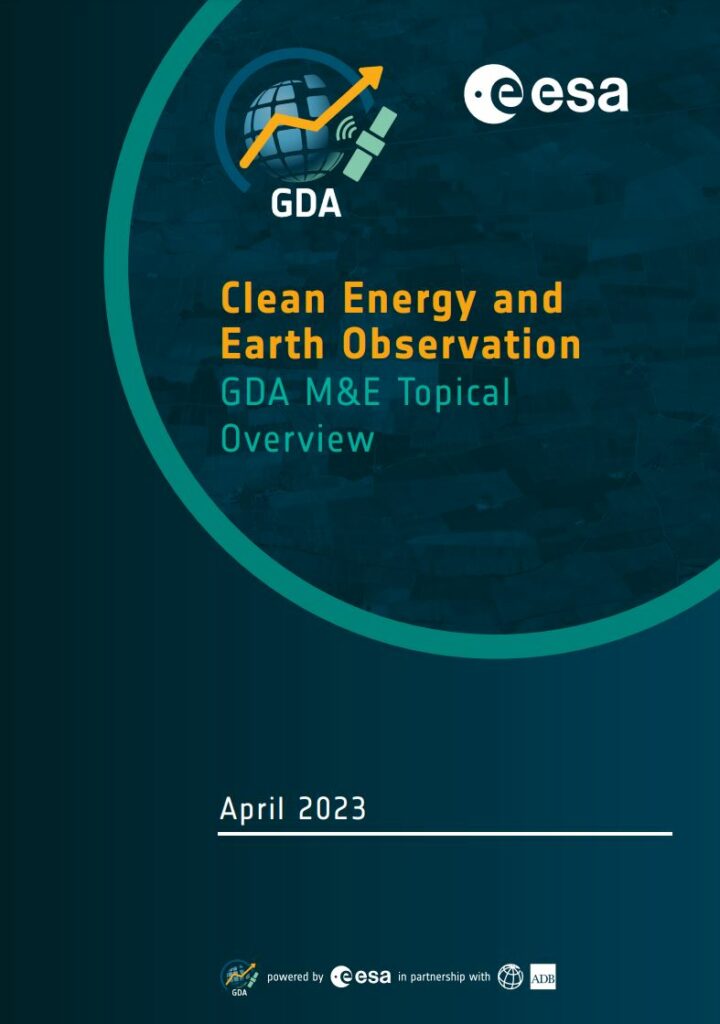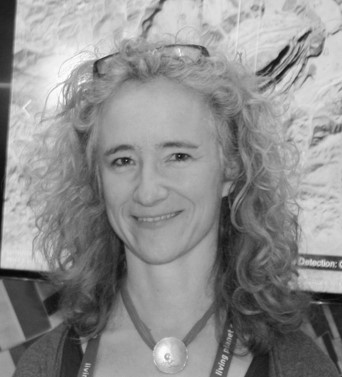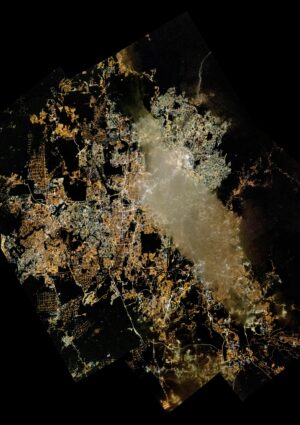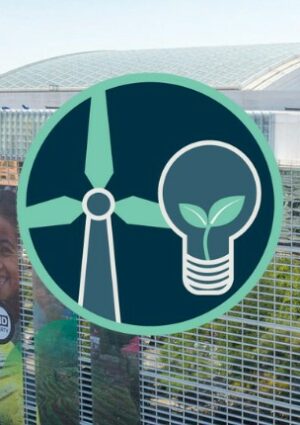Satellite Earth Observation (EO) data are enhancing the renewable energy landscape, offering valuable insights to overcome critical knowledge gaps. The European Space Agency (ESA) Global Development Assistance (GDA) programme recognises this potential and has released a Topical Overview on Clean Energy and Earth Observation, as part of its Monitoring & Evaluation and Impact Assessment (GDA M&E) activity. The GDA AID Clean Energy activity, which has recently started, will continue to expand and delve deeper into the subject, developing sustainable solutions for the International Financial Institutions (IFIs).
There is an urgent need for a shift to clean energy and innovative technologies to address escalating energy crisis and climate-driven poverty and disaster
The latest Intergovernmental Panel on Climate Change (IPCC) report confirms that greenhouse gas emissions (GHG) are driving global warming, leading to poverty and environmental disasters that threaten millions. Energy production is a major culprit, with fossil fuels responsible for the largest share of GHG emissions (see chart below). To avoid catastrophe, we must shift to clean energy and embrace innovative technologies that drive economic growth and job creation, while protecting the planet for future generations.

The pandemic and recent conflicts have worsened the energy crisis, driving up costs and making it harder to procure materials. Developing countries are struggling to fund clean energy projects, making it necessary to attract private investment and implement large-scale renewable infrastructure projects. In this context, IFIs, such as the World Bank (WB) and Asian Development Bank (ADB) play an important role in providing support to ensure a sustainable transition to clean energy in these countries.
IFIs are a major player in clean energy investment and climate action financing in developing countries
The IFIs facilitate clean energy investment by offering technical assistance and programmatic approaches.
The WB is leading the way in financing climate action in developing countries, investing over US$26 billion in 2021 alone. The Energy Sector Management Assistance Program (ESMAP) is a major initiative by the WB that partners with 22 organisations to support sustainable energy solutions in low- and middle-income countries. ESMAP focuses on improving renewable energy environments, expanding renewable energy technologies, and building a pipeline of sustainable hydropower projects.
The ADB has been actively contributing to the growth of the energy sector, making up about 21% of ADB’s total approved lending to developing countries from 2009 to 2020. The Clean Energy Program aims to increase investment in renewable energy and implement demand-side clean energy components in funded projects. The programme also monitors progress against the Energy Policy and seeks to mainstream and replicate proven technologies to achieve greater scale and lower costs.
EO satellites are the game-changer in clean energy implementation and public support
As the world shifts towards clean energy, the race is on to explore all possible avenues to ensure efficient implementation of renewable energy technologies. And in this race, EO satellites have proven to be the critical game-changer.
By measuring solar radiation, wind speeds, and other atmospheric parameters, EO satellites are providing us with the crucial data needed to assess the potential of renewable energy resources at a given location. This data is being used to plan large-scale solar thermal power generation, transmission, distribution, and maintenance projects, boosting energy efficiency like never before.

By providing critical information about energy demand, potential risks, and environmental impact, EO data helps decision-makers make more informed choices. It also facilitates consensus building between developers and community members, ensuring that everyone is on board from the early proposal stage to post-project implementation.
However, getting the public on board with unfamiliar technologies like renewable energy installations can be a challenge. That’s why using EO data in maps or visualisations can offer the public clear, unbiased information on environmental parameters such as land use, land change, and available resources.

By providing integrated energy strategy assessment, renewable energy site mapping, and environmental impact assessment, EO helps governments design informed investment plans.
EO can also help monitor compliance to policy and regulations, identify suitable sites for renewable energy assets, assess renewable energy resources, and optimise grid management. Additionally, EO-based information services can help solar energy managers assess system performance, detect faults, and reduce costs. With EO’s support, governments, companies, and financiers can make more informed investment decisions, promoting the transition to clean energy.
Enhancing clean energy operations by leveraging EO data in IFIs
But how effectively do IFIs utilise EO satellites in their projects? The WB has pioneered several initiatives that leverage satellite imagery to provide crucial data for clean energy transition operations in developing countries.
One such initiative is the Land Use Repurposing Application (LURA), which assesses the viability of repurposing coal lands for a range of sustainable post-coal projects. Collaborating with stakeholders, LURA produces a map of the area, highlighting the most viable repurposing options. These may include renewable energy generation, agriculture, natural habitats, or business parks for low-carbon industries.
Another key application of EO in the WB is its estimation of global gas flaring. By utilising advanced sensors that detect the heat emitted from oil and gas facilities worldwide, the bank can quantify these emissions, providing robust estimates of global gas flaring volumes. This data is essential in reducing carbon emissions and mitigating the effects of climate change.
The ADB may not have as many energy transition initiatives using satellite imagery as the WB, but it has still implemented some notable projects. For instance, in the Quantum Leap in Wind Power Development project, wind resource maps were created to estimate wind power and equivalent wind speed in Mongolia, the Philippines, and Sri Lanka. These maps used inputs from satellites, including terrain and meteorological data, which were screened to select representative stations and data periods for use in the mapping system.
Unlocking the power of EO data for clean energy in developing countries by overcoming barriers
The integration of EO data in clean energy operations has the potential to create significant benefits for developing countries, including increased access to reliable and affordable clean energy, improved energy security, and reduced greenhouse gas emissions.
However, the adoption of EO data in these regions is still facing challenges due to limited resources and technical expertise. IFIs play a crucial role in overcoming these barriers by providing capacity building and technical support to project leaders and decision-makers.
To further facilitate the integration of EO in clean energy projects, a tailored approach is necessary to provide relevant and easily usable data formats that meet the needs of end-users. This approach should also aim to raise awareness among decision-makers regarding the value of EO data in informing their decisions. Through collaborative efforts among stakeholders, including IFIs, governments, and the private sector, the potential of EO to revolutionise clean energy operations in developing countries can be fully realised.
As this article has highlighted, EO technology has the potential to revolutionise clean energy operations, especially in developing countries, by providing valuable data to inform decision-making processes. In this context, the GDA AID Clean Energy is playing an essential role in providing support to the IFIs.
As we move towards a greener future, it is essential to stay informed about the latest developments in clean energy trends and EO technology. By staying up-to-date with these advancements, we can work together to create a more sustainable future for all. Let’s continue to support clean energy development and leverage the power of EO technology to make it happen.
The report is available here. Please contact gda@esa.int with any questions.











